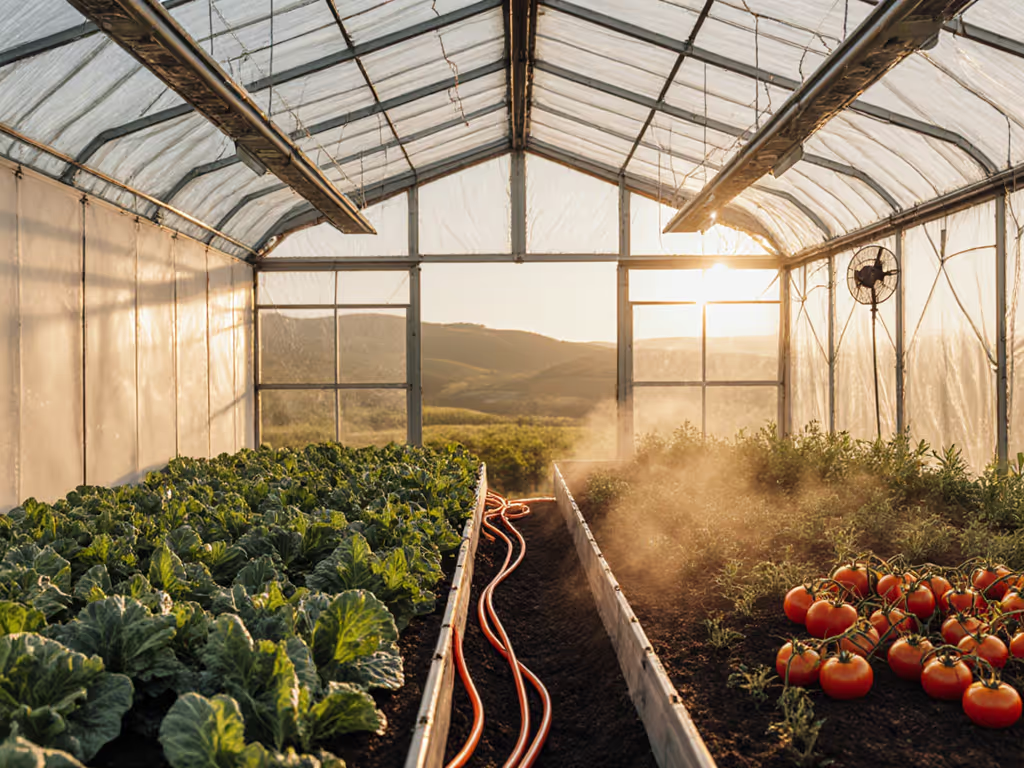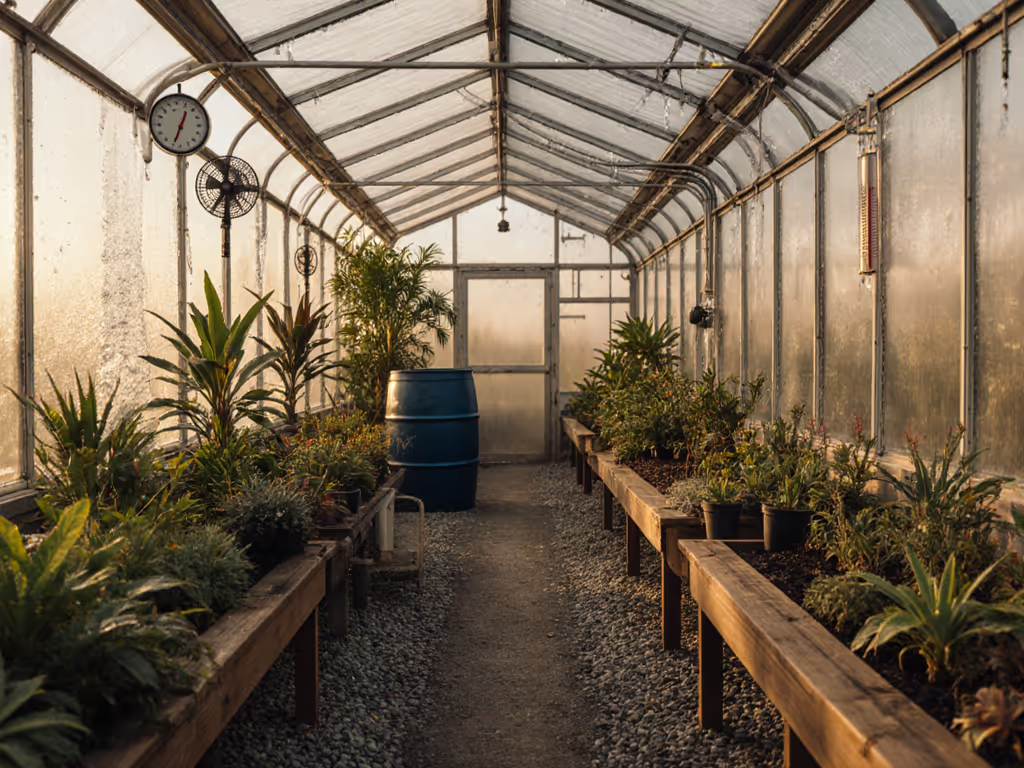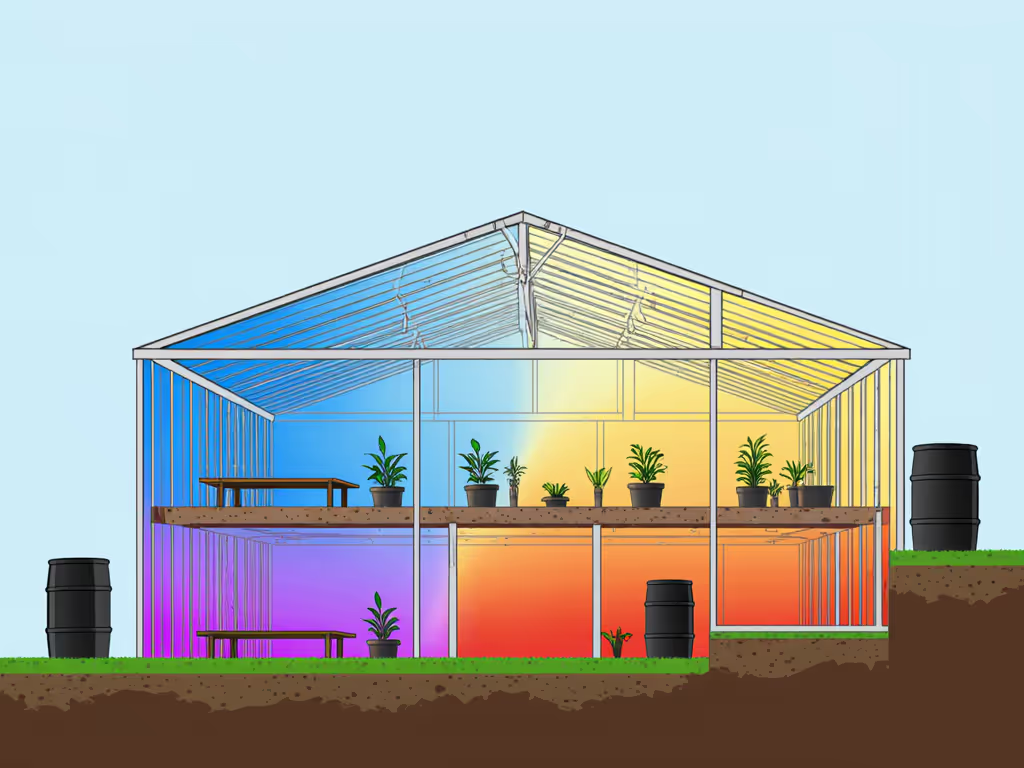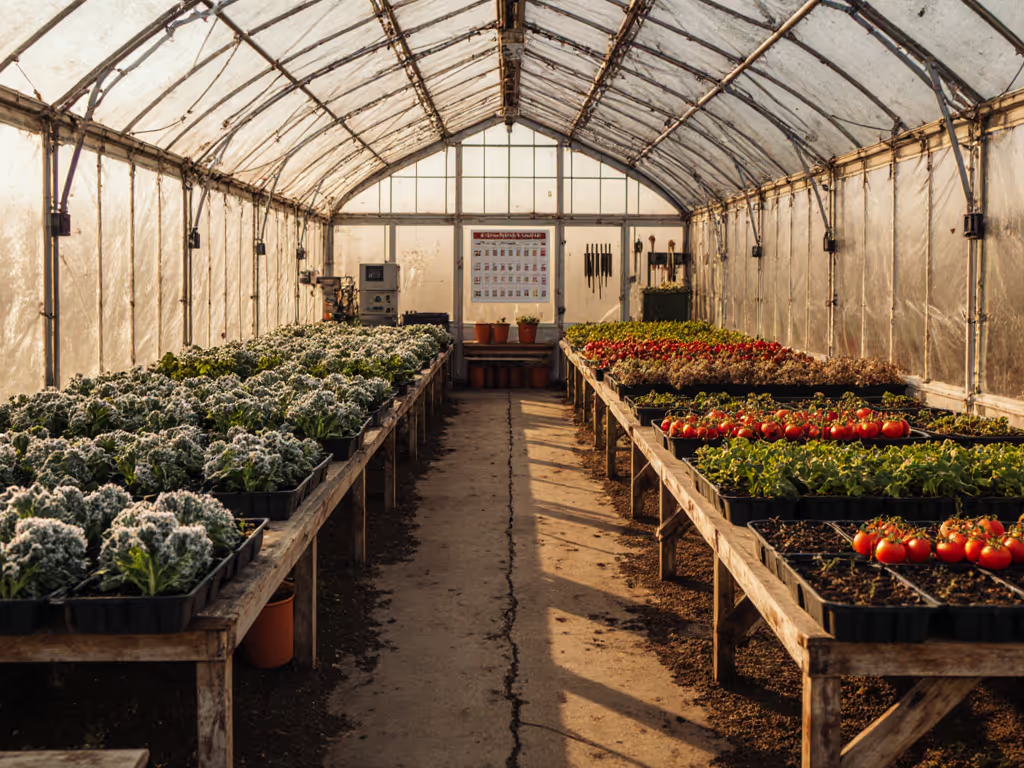You've probably noticed how some corners of your greenhouse feel like a tropical rainforest while others could double as a sauna, which is why mastering greenhouse microclimates is your secret weapon for year-round success. When I first inherited that sweltering hoop house, tomatoes would scorch by noon, while seedlings near the north wall barely survived. The solution wasn't just buying fancy equipment or covering greenhouse glazing with expensive tech, but understanding how to work with natural temperature flows. Today, I'll show you how to read your greenhouse's thermal personality and create thriving zones without gadget overload.
Comfort grows plants (and keeps you tending through storms).
Why Your Greenhouse Isn't One Climate, But Many
Even a modest 8x10 foot traditional greenhouse contains multiple climates. Vertical differences matter most: on a sunny April day, I've measured 12°F (7°C) between bench level and ceiling height. Near the door? Drier air from wind infiltration. Along north-facing walls? That cooler, moister pocket where humidity-loving plants thrive. These microclimates aren't flaws; they're opportunities when you learn to read them.
Unlike USDA zones that describe regional averages, your greenhouse microclimates form from immediate interactions: sun angles hitting different surfaces, thermal mass storage, and airflow patterns. As one industry report confirms, maintaining vapor pressure deficit (VPD) between 0.5-1.2 kPa is crucial for healthy plant transpiration, yet this single metric shifts dramatically across your space as temperatures fluctuate.
Step 1: Map Your Thermal Personality (No Tech Required)
Grab three thermometers (or a single sensor you can move) and check these zones at the same time each morning and afternoon for three days:
- Floor level near north wall
- Bench height at center
- Nooks under benches or in corners
- Near vents or doors
- Directly under roof peak
I use sticky notes to mark measurement spots, a low-cost habit that revealed why my heirloom tomatoes always struggled. They were planted precisely where afternoon heat spiked above 90°F (32°C), past the optimal range for fruit set. Simple observation showed my north wall consistently stayed 8-10°F (4-5°C) cooler than the south, a perfect home for lettuce while peppers basked in the sunnier zones.
Design the path you'll actually use, your most frequent route through the greenhouse reveals where comfort matters most.
Step 2: Create Zones with Passive Moves, Not Power Bills
Sectioning greenhouse space doesn't require walls or complex dividers. Instead, work with what you have:
- Water barrels along north walls absorb heat by day and release it gently at night, creating stable microzones (I use food-grade 55-gallon drums painted matte black, and just two dropped my peak summer temps 10°F/5.5°C)
- Benches as thermal barriers: solid wood or metal frames create subtle microclimates underneath for moisture-loving plants
- Strategic plant placement: tall crops like tomatoes naturally shade smaller plants, mimicking forest floor conditions
For your north end or cooler corners, these naturally become perfect spots for small greenhouse heating needs, without running supplemental heat. Cold-tolerant crops like spinach and kale actually perform better in these naturally cooler zones than in uniform heated conditions. To coordinate crops across microzones, see our guide to growing cool and warm crops together.
Step 3: Master the Humidity Dance
Humidity isn't just about numbers; it's sensory. On muggy mornings, you'll notice condensation on cooler surfaces (like metal benches) while plants near vents look crisp. This is vapor pressure deficit (VPD) at work, which research shows keeps tomato photosynthesis optimal between 0.75-1.06 kPa.
Rather than fighting humidity with dehumidifiers, try these passive moves:
- Morning airflow activation: Open vents at sunrise to let cooler night air sweep through before temperatures rise
- Strategic mulching: Organic mulch on soil maintains moisture without increasing aerial humidity
- Water placement: Keep reservoirs near thermal mass (like those barrels) where evaporation helps moderate temperature swings
Step 4: Plant Placement That Works With Microclimates
Once you've mapped your zones, match plants to their natural comfort ranges:
| Temperature Range | Good Candidates | Sensory Cue |
|---|
| 65-75°F (18-24°C) | Lettuce, spinach, kale | Crisp leaves, no wilting by noon |
| 75-85°F (24-29°C) | Tomatoes, cucumbers, peppers | Strong flower set, no blossom drop |
| 85-95°F (29-35°C) | Eggplant, okra, sweet potatoes | Vigorous growth, no leaf curling |
Last week, I moved basil seedlings from a steamy corner near my propagation tray to a slightly breezier zone, and within days, the purple tinge from stress disappeared. Your greenhouse isn't failing you; you're just learning its language.
Step 5: Seasonal Adjustments That Stick
Your microclimate strategy must shift with seasons, but not through expensive retrofits. In my hoop house, I swap out one simple element each season:
- Spring: White shade cloth over south roof section prevents early heat spikes
- Summer: Fully open north vents while keeping south vents partially closed to maintain airflow without overheating
- Fall: Move water barrels to south-facing walls to maximize heat capture
- Winter: Strategic straw bales around north foundation act as insulation without blocking light
The key is making adjustments you'll actually maintain. I once tried intricate automatic vent systems but found myself overriding them constantly. Now my simple rope-and-pulley vents get opened each morning as part of my coffee ritual (small, sustainable habits build lasting success).
Your Greenhouse, Your Sanctuary
When you stop fighting your greenhouse's natural tendencies and start working with its microclimates, something shifts. It's not just about better yields (though you'll get those), but about creating a space you want to be in: cool enough to prune at noon, dry enough to avoid fungal issues, organized to find tools easily. Comfort sustains the habit; if you enjoy the space, you'll tend it through every season.
This approach transformed my inherited hoop house into a neighborhood refuge, and my elderly neighbor still stops by at midday to help prune, now that it's comfortable even in summer heat. She doesn't care about VPD metrics; she just knows it feels good to be there.
Ready to go deeper? Grab a notebook and track your microclimate shifts for a week. Notice where you naturally linger, where you rush through, and let those sensory cues guide your next adjustment. Because the most effective greenhouse isn't the one with the most gadgets, but the one where you happily spend Tuesday afternoons.




